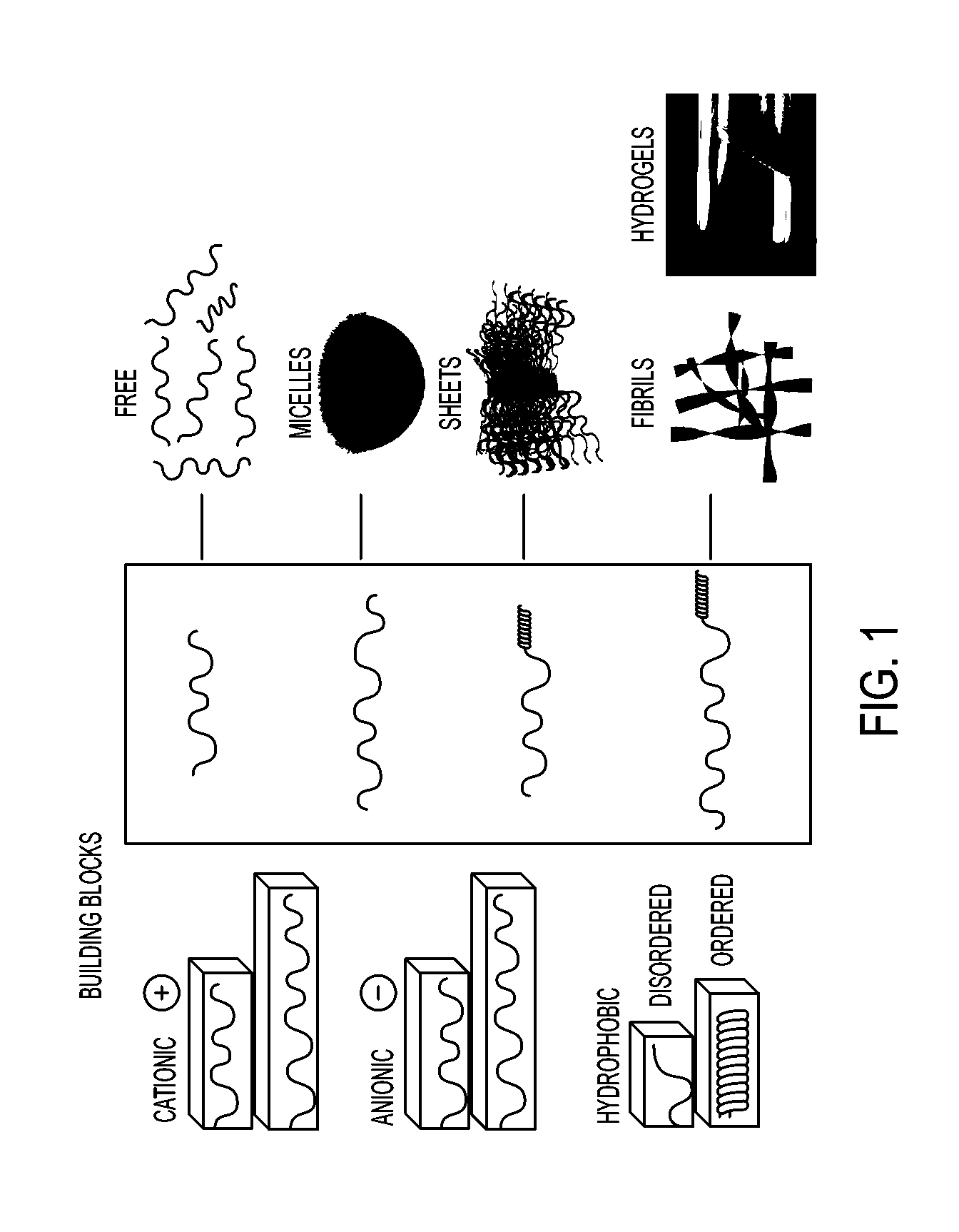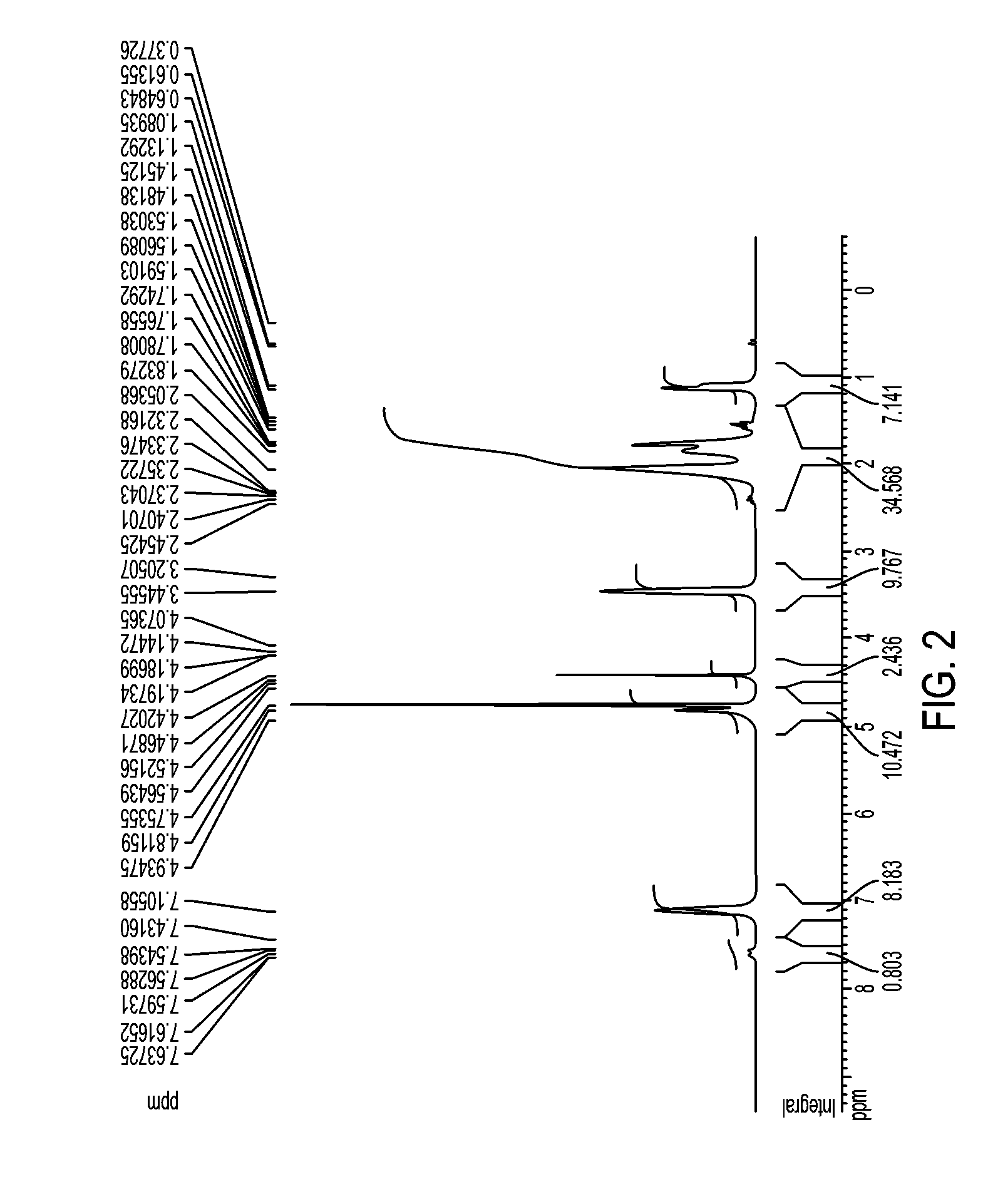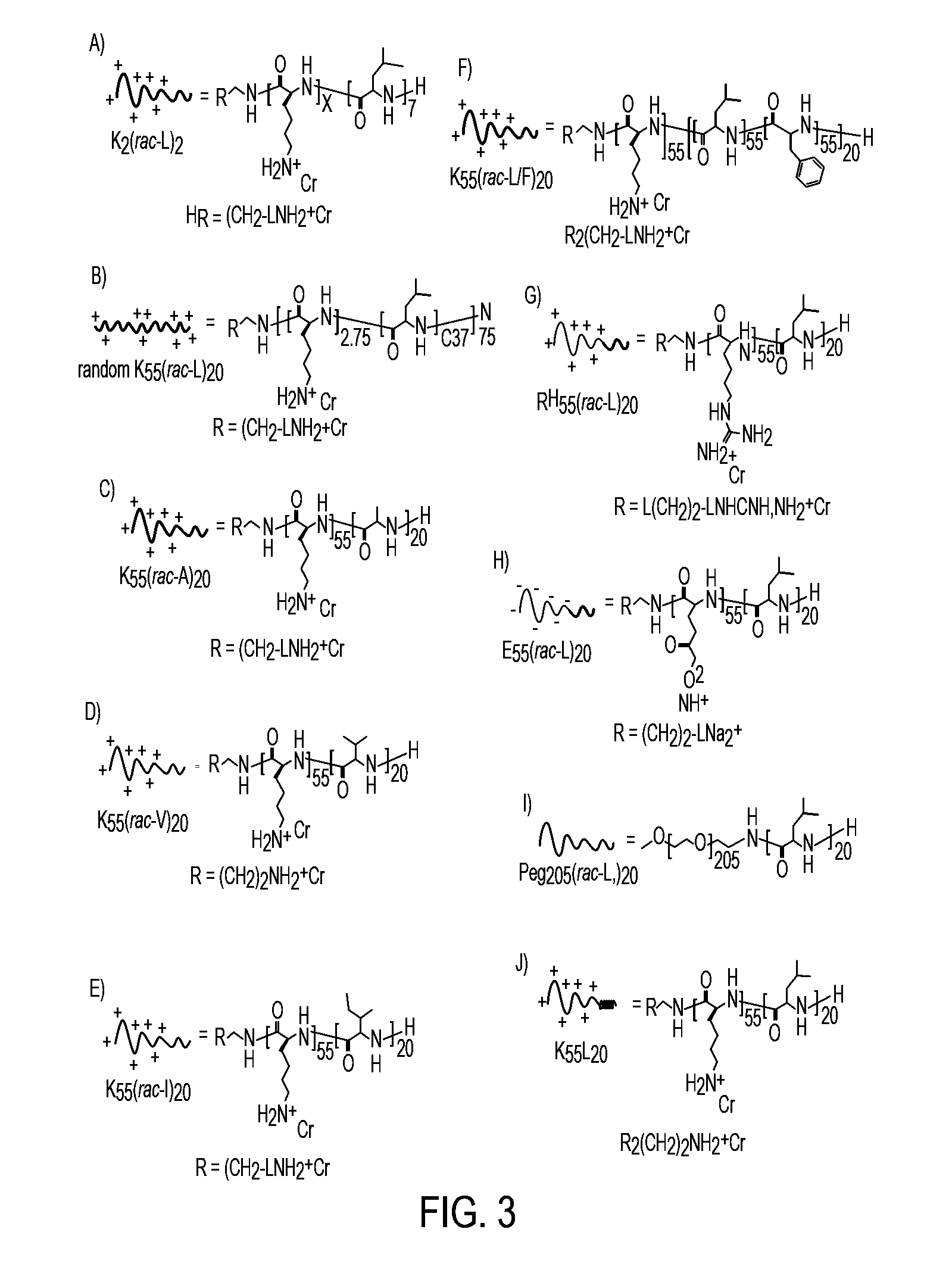Compositions and uses of materials with high antimicrobial activity and low toxicity
a technology of applied in the field of compositions and uses of materials with high antimicrobial activity and low toxicity, can solve the problems of irregularity, ill-defined materials, limited use in many medical settings, etc., and achieves low mammalian toxicity, high antimicrobial activity, and overcome the limitation of the inherent toxicity of cationic antimicrobials.
- Summary
- Abstract
- Description
- Claims
- Application Information
AI Technical Summary
Benefits of technology
Problems solved by technology
Method used
Image
Examples
Embodiment Construction
[0075]The following description is provided to enable any person skilled in the art to make and use the invention and sets forth the best modes contemplated by the inventor of carrying out his invention. Various modifications, however, will remain readily apparent to those skilled in the art, since the general principles of the present invention have been defined herein specifically to provide synthetic copolypeptides with high antimicrobial activity and low toxicity.
[0076]Antimicrobial copolypeptide compositions of this invention may contain one or more cationic amino acids (e.g. lysine, arginine, homoarginine, omithine) and one or more hydrophobic amino acids (e.g. leucine, valine, isoleucine, phenylalanine, alanine) arranged in blocks (FIGS. 1-3, FIG. 33 (Table 1)). Polycationic amphiphilic polypeptides (e.g., containing amine groups that are protonated at neutral pH, peralkylated ammoniums, or guanidiniums) display high antimicrobial activity. For example, as depicted in FIG. 4,...
PUM
| Property | Measurement | Unit |
|---|---|---|
| concentrations | aaaaa | aaaaa |
| concentrations | aaaaa | aaaaa |
| concentration | aaaaa | aaaaa |
Abstract
Description
Claims
Application Information
 Login to View More
Login to View More - R&D
- Intellectual Property
- Life Sciences
- Materials
- Tech Scout
- Unparalleled Data Quality
- Higher Quality Content
- 60% Fewer Hallucinations
Browse by: Latest US Patents, China's latest patents, Technical Efficacy Thesaurus, Application Domain, Technology Topic, Popular Technical Reports.
© 2025 PatSnap. All rights reserved.Legal|Privacy policy|Modern Slavery Act Transparency Statement|Sitemap|About US| Contact US: help@patsnap.com



